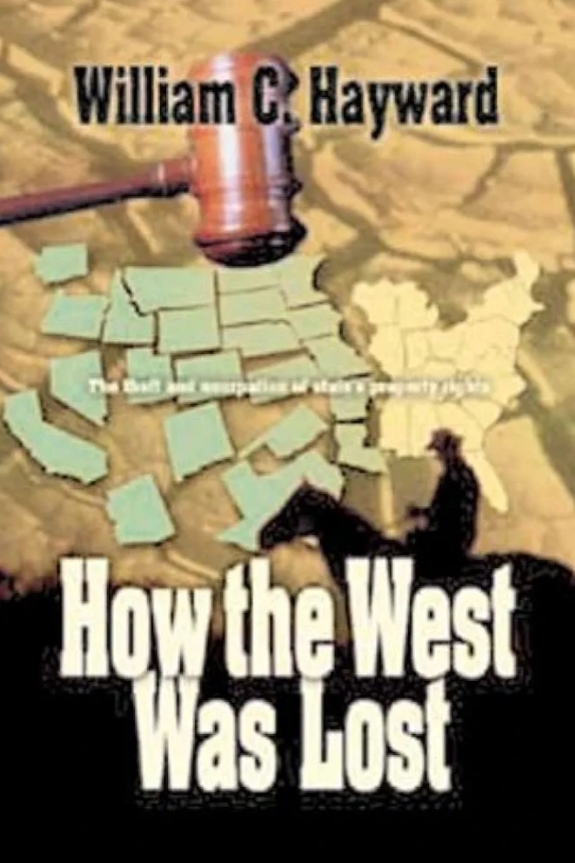Introduction: The West—Myth, Promise, and Dispossession
The American West has always loomed large in the nation’s imagination: a place of freedom, self-reliance, and opportunity. But in How the West Was Lost, William C. Hayward offers a powerful and sobering counternarrative. For Hayward, the true story of the West is not just one of cowboys, pioneers, and wide-open spaces—but of dispossession, broken promises, and the gradual transfer of land, resources, and freedom from the people to centralized power.
The Heart of the Book: How Was the West “Lost”?
A. The Promise: Settlement, Homesteading, and American Liberty
Hayward begins by revisiting the founding vision of the West—embodied in policies like the Homestead Act, Desert Land Act, and Mining Act—which were designed to encourage settlement and build a society of small landholders. The West was to be a land of opportunity, where anyone willing to work and improve the land could gain property and prosperity.
B. The Reality: Federal Expansion and the Closing of the West
However, as Hayward shows in painstaking detail, this promise was slowly and deliberately undermined:
- The federal government retained title to vast tracts of Western land (today, about half of all land west of the Rockies is federally owned).
- Agencies like the Bureau of Land Management (BLM) and the Forest Service grew in power, regulating—and sometimes severely restricting—the activities of ranchers, miners, and loggers.
- Water rights, grazing rights, and access—once seen as property—became mere “privileges” subject to the whims of federal administrators.
C. Dispossession of the People
Hayward describes how generations of Western families found themselves squeezed out by changing laws, regulations, and interpretations of property rights. As federal power grew, the traditional way of life—ranching, logging, mining, small farming—became less viable, with families losing access to the land and resources they had stewarded for generations.
Key Historical Episodes and Evidence
A. “Split Estate” and Legal Sleight of Hand
Hayward details the legal concept of the “split estate”—where surface rights, mineral rights, grazing rights, and water rights can all be separated and treated differently by the government. This legal complexity allowed the federal government to keep control even as it encouraged settlement.
B. Environmentalism and the New Federalism
One of the most controversial chapters in Hayward’s analysis is the rise of environmental regulation as a means of expanding federal power. Legislation such as the Endangered Species Act and the creation of vast wilderness areas often resulted in further restrictions on land use, undermining local control and livelihoods.
C. Broken Promises to States and Settlers
Hayward provides historical evidence that the original promise—eventually to transfer public lands to the states or the people—was never truly honored. He documents broken treaties with Native Americans, broken legal promises to settlers, and the steady encroachment of federal agencies.
The Broader Thesis: Power, Property, and the Fate of the Republic
A. Property Rights Under Siege
For Hayward, the dispossession of the West is part of a broader national and even global trend: the erosion of property rights and local autonomy in favor of centralized, bureaucratic control. He warns that what happened in the West is a harbinger for the entire nation.
B. The Role of Courts, Congress, and Presidents
Hayward chronicles how, over the decades, all three branches of government have been complicit. Courts have often deferred to federal agencies. Congress has expanded regulatory authority. Presidents—of both parties—have presided over ever-growing federal estates and power.
C. The Loss of the Western Ethos
At its heart, Hayward’s book is a lament for the loss of the Western spirit: independence, stewardship, and the belief that a free people must own and control their land. He argues that as property rights have eroded, so too has civic virtue, self-reliance, and the capacity for self-government.
Legacy and Continuing Relevance
A. Inspiration for the Sagebrush Rebellion and Modern Movements
How the West Was Lost helped inspire movements like the Sagebrush Rebellion, the Wise Use Movement, and today’s constitutionalists and property rights activists. Hayward’s arguments are cited by those who challenge the legitimacy of federal land ownership and call for the restoration of local control.
B. Criticism and Counterarguments
Critics of Hayward argue that federal oversight has helped preserve vast tracts of public land from exploitation, protected endangered species, and ensured public access. They also note that privatization can lead to overuse, environmental damage, and the loss of a shared national heritage. Many legal scholars dispute Hayward’s reading of property rights and federal authority.
C. Ongoing Struggle
The battle lines drawn in How the West Was Lost remain relevant: from the Bundy Ranch standoff to fights over water, grazing, logging, and mining, the central question is unchanged—Who owns the land, and who decides how it is used?
Conclusion: Lessons and Warnings for America’s Future
William C. Hayward’s How the West Was Lost is more than history—it is a warning. When property rights and local autonomy are undermined, not only is a way of life destroyed, but the very foundations of liberty and self-government are weakened. Hayward’s message is clear: the struggle over the West is a struggle for America’s soul.
If we fail to learn the lessons of dispossession, we risk repeating them—first in the West, then everywhere.







